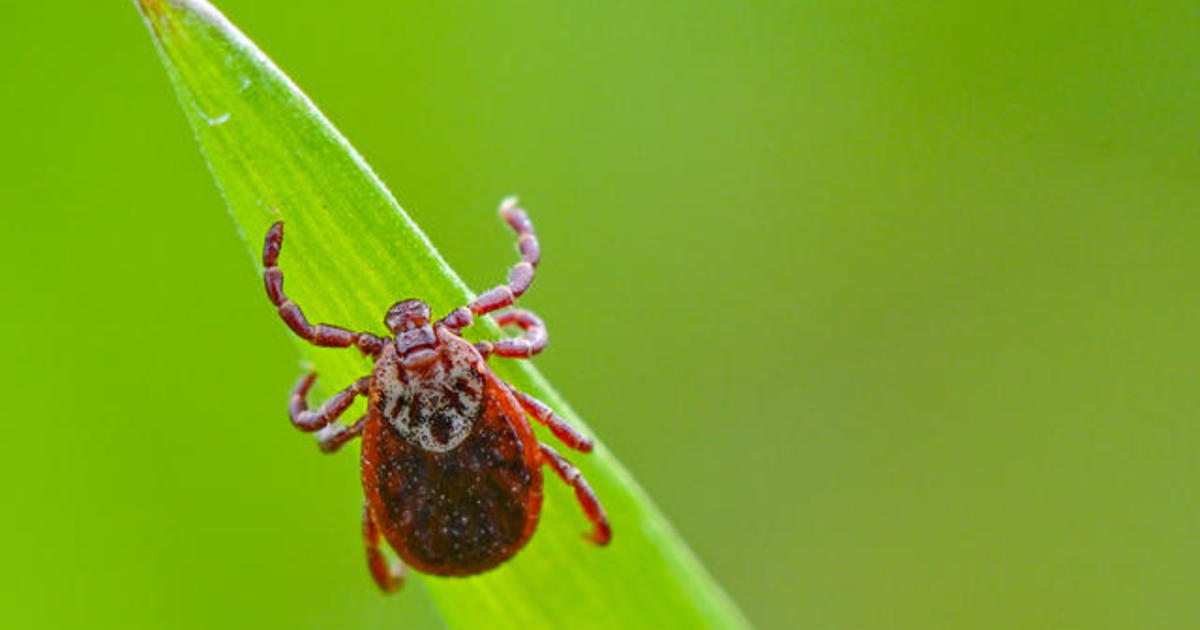CBS News
How hunters are helping researchers track the spread of tick-borne diseases

Tick-borne diseases are on the rise throughout the country — and a unique collaboration between hunters and researchers is helping to bring more information to light.
Hunters are checking the animals they catch for ticks and then sending them to be tested for infections in a program with Baylor University and the Texas Parks and Wildlife Department.
“We work with the hunter population because we thought they could be at high risk. And in doing that we realized they were exposed to all kinds of bugs,” said program director Sarah Gunter, Ph.D. “We want to know what the risk is in an area because if we’re going to diagnose people based off of symptoms, you have to know that there’s a risk for that disease in the area.”
It’s a risk that Tony Galbo has been campaigning to create greater awareness for. His 5-year-old daughter Gabby died more than a decade ago after developing Rocky Mountain spotted fever, a tick-borne disease that wasn’t diagnosed in time to save her.
“It’s continued to be ignored. Mandatory reporting, mandatory mapping and public awareness — that’s all I’m asking for. If we can start doing that, there’s going to be less and less cases missed,” he said.
Over the past 20 years, there has been an increase in reported cases of Lyme disease, the most common — but not the only — infection spread by ticks in the U.S.
“We’re finding ticks move into new areas,” Gunter said. “Things like changes in the season — so summers getting hotter, summers getting longer, allowed ticks to move into areas that maybe it was historically too cold for them to be. People moving into areas where they historically haven’t had people can put individuals in closer contact to animals and wildlife and result in what we call spillover of disease.”
After coming back inside, run your clothing through the dryer to kill any ticks and check your body carefully for ticks as well, experts advise.
The Centers for Disease Control and Prevention says preventing tick bites is an important step in protecting yourself against tick-borne diseases.
The agency suggests avoiding grassy, brushy and wooded areas when you go outdoors, and using an EPA-registered insect repellent. Once you go back inside and perform a thorough tick check, remove any attached ticks immediately.
Use a pair of tweezers to grab the tick by the head, without squeezing it, and lift it up straight out of the skin, removing the entire tick. Save the tick to bring it in for testing.
Being bitten doesn’t necessarily mean you’ll get a tick-borne disease, but it’s important to keep an eye on the area after a tick removal or suspected bite. If changes to the area or symptoms like a rash, fever or headache occur, seeing a doctor and getting treatment soon is key. Experts note that the rash may not be the traditional bull’s eye rash often associated with Lyme disease.
“It’s so important to treat immediately for a good clinical outcome,” Gunter said.
CBS News
The cream of the crop in butter

Watch CBS News
Be the first to know
Get browser notifications for breaking news, live events, and exclusive reporting.
CBS News
Baking an ancient bread in Tennessee

Watch CBS News
Be the first to know
Get browser notifications for breaking news, live events, and exclusive reporting.
CBS News
Good enough to eat: Noah Verrier’s paintings of comfort food

Watch CBS News
Be the first to know
Get browser notifications for breaking news, live events, and exclusive reporting.





